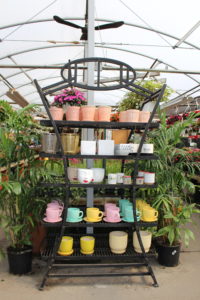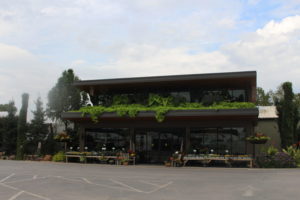The Urge To Splurge
There’s a new book out that offers independent garden centers a real ray of hope for 2004, provided they truly understand the consumer dynamics that are building and then make the conscious decision to take advantage of them.
The premise of the book, Trading Up, The New American Luxury by Michael Silverstein and Neil Fiske, is that the concept of luxury has changed for the middle class, those households with incomes of $50,000-150,000, from items they previously associated with as wealthily, like Mercedes and high-tech home theaters, to new categories of premium, yet affordable items. These new categories are functional and related to the improvement and enhancement of their lifestyles, not necessarily those that are purchased primarily to impress others. This consumer is willing to pay more for what they see as improved quality versus cheaper, non-branded and mainstream items. For example, the rapid growth of premium beers, coffees, sports equipment, HD and plasma televisions and fully featured name branded computer equipment. And there’s no reason why premium lawn and garden products can’t be part of these consumers’ choices for up traded categories!
All categories don’t qualify for consideration of this new buying decision process; rather, these consumers are highly selective in identifying the categories they choose to up trade on. They must be discernably better than the run-of-the-mill products, are usually branded and offer improved specifications and benefits; price value is not a major part of the value equation that drives these purchases. These consumers become strong brand loyalists with strong emotional attachments and evolve into passionate users of the categories they choose, learning as much as they can about these categories.
Trading Up by Trading Down
By analyzing the current marketplace and consumer behaviors, it’s readily evident that these consumers are funding these “trading up” purchases by trading down, meaning that they will choose to purchase their commodity needs, those unbranded or private label items where utilitarian function is of primary concern, and there’s little specification or quality differentiation. They’ll buy these items at the retail venue that offers the lowest price . . .the money they save is then channeled into those “trade up” purchases. It’s not about spending more or less money than they did before, but rather how and where they allocate their dollars.
And this isn’t a small potential population group to cater to. Silverstein and Fiske estimate that almost 40 percent of U.S. households qualify for this trend — based on the income demographic criteria, about 120,000,000 individuals.
As I write this article in mid-December, the early Christmas sales reports validate this new retail phenomena; the price-value retailers such as Wal-Mart and Target, Home Depot and Lowes are showing industry-leading comparable-store increases, as are the premium brand retailers such as the high-end department stores and specialty stores, while the middle market retailers such as JC Penney, Kohl’s and Mervyns are suffering. Electronic retailers like Best Buy are seeing their sales focused on the low end and high end, with little action in the mid price points of a given category. The consumer is making the conscious decision to down trade on the commodity categories and re-deploy these savings on the up trade category retailers.
Taking Advantage of the Trend
So how does an independent garden center take advantage of this new consumer trend? Well, gaining your share of this new market won’t be achieved through business as usual with positioning, marketing, programs, services or assortments. Just as the consumer is making conscious decisions, you’ll have to make conscious decisions, too, and some of these may fundamentally change your business.
First, identify the brand image you want to pursue. It should be the individual ultra-premium category brand that offers true benefits and differentiation. In a garden center environment, these high-end brands need to be bundled, meaning that you need to have the supporting premium brand products in every category the consumer needs to purchase to achieve outstanding satisfaction and success for the project. As an example, for a floral project, you’ll need to offer high-end, branded plants, soils, fertilizers, garden tools, edging, watering supplies . . .and premium educational expertise to allow premium performance and a complete premium experience. Just carrying premium plants won’t make this premium experience or image possible. The same philosophy holds true for patio furniture; just carrying a high-end, branded set, won’t suffice to build the desired image; you’ll need to offer completeness, including umbrellas, umbrella stands, cushions and accessories, as well as grills, patio lighting and garden sculptures.
You’ll need to make the decision to either focus your entire garden center offering on this up trade direction or offer this premium program in addition to your existing product assortments and programs. However, if you want these better/best images to co-exist, think about segregating the premium products into a separate section of your garden center, with up traded displays, merchandising and presentations, up traded point of purchase labeling, packaging and signage, all supported with unique up traded advertising and marketing support.
If you make the decision to focus all of your efforts on capturing this new consumer to avoid possible image blurring and confusion, your facilities must complement your merchandise assortments. And by facilities, consider the parking lot, landscaping exterior signing, physical plant, fixtures, employee attire, floors, overhead shade and shopping protection, and, yes . . .even the restrooms. Everything you do needs to reinforce the overall image you want to communicate.
Making the Change
Will increasing focus on the up trade consumer eliminate competition and comparison with your price-driven mass-market retailer? Not completely. But if consistently applied and continuously upgraded (your competition isn’t standing still and is continually improving), it will help differentiate you from them.
Is there risk in changing your approach to attract this new consumer segment? Sure, there’s always some risk in change. If you’re satisfied with your sales success and have more business than you can handle, then stay with your current direction. But, if you recognize the fact that your mass market competition is going to get stronger and is increasing market share at your expense and you’re looking for an opportunity to differentiate, then maybe the up trading approach is something to consider.
Think hard, read this book and study your customer base (both current and potential), and make the decision that makes sense for you.

















 Videos
Videos





